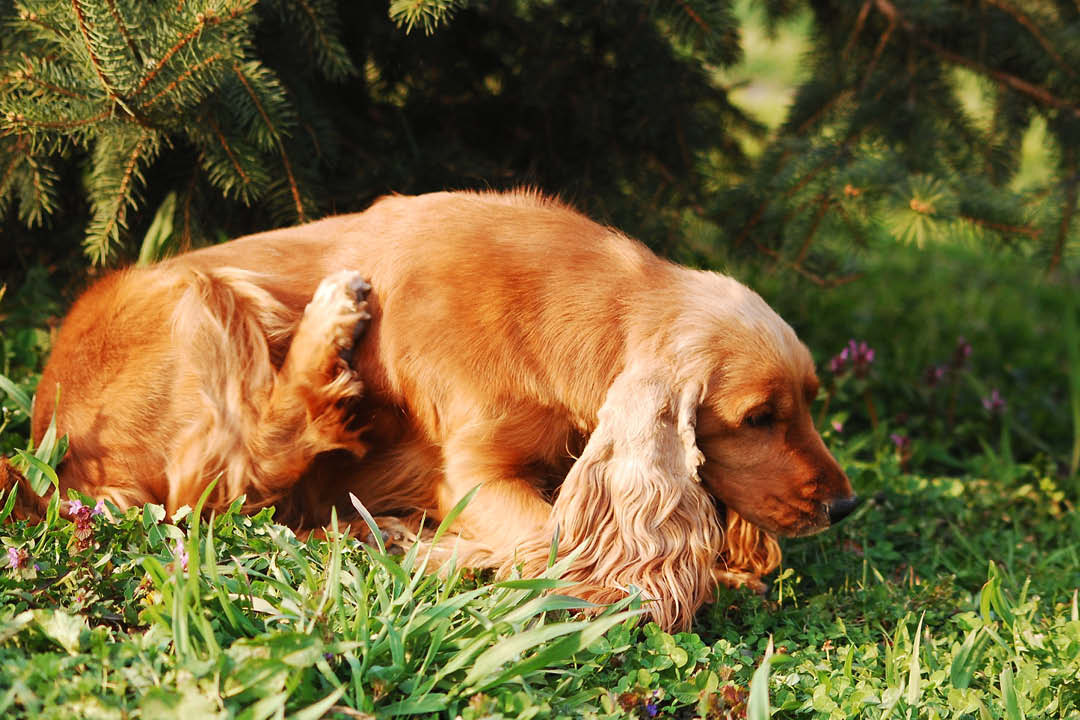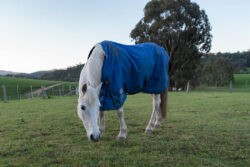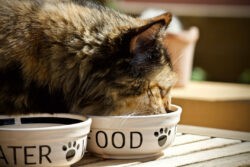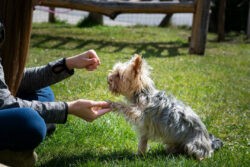You may have noticed your pet scratching himself more this summer — chances are, it’s because he’s picked up fleas.
It is a myth that fleas are a sign of a dirty home, so there is nothing to be ashamed of! Fleas are focused little insects who, once they’ve hitched a ride on your pet and fed on his blood, will lay their eggs and begin to reproduce! Cleaning, including thorough vacuuming, and regularly washing pet bedding, have a vital part to play, but to really get rid of them, you will need extra help.
Most pet owners understand that they need to protect their dog or cat or rabbit against fleas, and there are various types of product that can do this, from spot-ons to tablets, sprays and powders. The key to a successful approach is to have a regime that you stick to throughout the year. It’s best to get advice from your vet to find a quality treatment that suits your individual pet and his lifestyle. For example, an outdoor cat will need a more ‘belt and braces’ approach compared to an indoor cat. And if you find it difficult to administer a flea treatment, a vet nurse will be able to demonstrate, or give the treatment for you.
If your pet is scratching more than usual, it is worth getting him checked out to discover the cause since animals can suffer from a range of allergies that can make them itch.
If you spot fleas and flea dirts (black specks) in your pet’s coat, don’t panic and give him an ‘extra dose’ of a flea treatment. Doubling up on what are quite powerful chemicals can be harmful. So, if you have already applied a drop-on or a flea product on your cat or dog, do not be tempted to fi t a flea collar for good measure!
THE FLEA LIFE CYCLE
The female flea lays her eggs — up to 20 per day — in your pet’s fur. These fall onto the floor, bedding or furniture where they hatch into larvae, which will crawl into cool, dark spaces like carpet or skirting boards. The larvae spin themselves into a cocoon called a pupa. The pupae will only hatch into adult fleas when a food source walks by, be it animal or human.
HOME TREATMENT
The flea’s life cycle means the only way to get on top of a flea infestation is to treat your home as well as your pet. Look for household flea treatments which combine insecticides with Insect Growth Regulators (IGRs). Such products have a dual action effect – the insecticide kills the adult fleas and halts the development of eggs and larvae. These spray-format products are long-lasting, some being effective for six months. Use them on carpets, soft furnishings, skirting boards, and of course, your pet’s bedding.
NEVER use a flea product intended for a dog on a cat. The concentrated permethrin used in some flea products designed for dogs is highly toxic to cats!







